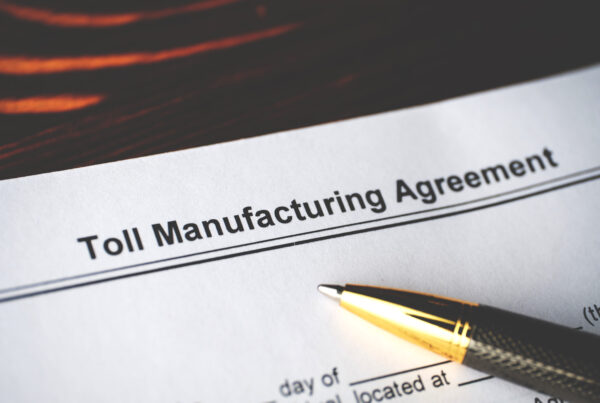In the complex world of manufacturing, documentation is paramount. Traditionally, manufacturing documentation was maintained through paper-based methods, where every step of the production process was painstakingly noted down, verified, and archived. These manual records, though widespread, were susceptible to various errors – from simple clerical mistakes to information getting lost or destroyed.
Enter the Electronic Batch Record (EBR). As the name suggests, an Electronic Batch Record is a digital version of the manufacturing documentation. Instead of having a physical paper trail, every step of the production process is electronically logged in real-time, stored securely, and easily retrievable. The components of EBR typically include:
- Master Batch Records: A template that ensures a standardized format for documentation across batches.
- Production Data: Information on raw materials, batch yields, equipment used, and any deviations from standard procedures.
- Audit Trails: An electronic log of all changes made to the record, including who made the changes and when.
- Sign-offs: Digital signatures from authorized personnel verifying each step of the process.
Benefits of Electronic Batch Records
The shift from paper to digital in manufacturing documentation wasn’t just a nod to modernity. It was a strategic move that brought with it a plethora of benefits:
- Real-time Updates: With EBRs, you can view production data as it happens. This real-time insight enables quick decision-making and rapid response to any issues that may arise.
- Improved Visibility: Everyone, from the shop floor to the management team, can have access to the same data, fostering better communication and coordination.
- Accuracy and Error Reduction: Digital documentation eliminates many of the errors that come from manual data entry. With predefined templates and automatic data fetching, EBRs ensure the documentation is accurate.
- Enhanced Traceability: If there’s a problem with a product, EBRs allow manufacturers to trace back every step of the production process. This traceability is crucial for determining root causes and implementing corrective actions.
- Regulatory Compliance: For many industries, compliance with regulatory standards is mandatory. EBRs simplify compliance by maintaining standardized records, automating reports, and ensuring all processes are transparent and auditable.
These advantages underline why so many businesses are making the move from traditional paper-based records to automated electronic batch record systems. Whether it’s for improved efficiency, accuracy, or compliance, the benefits of EBRs are clear.
Electronic Batch Records and Manufacturing Execution Systems, the Dream Team
When diving into the world of manufacturing and electronic documentation, it’s essential to understand the synergy between Electronic Batch Records (EBR) and Manufacturing Execution Systems (MES). At the nexus of modern manufacturing technology, the MES serves as a bridge between enterprise-level systems and control-level systems, thereby acting as a central hub for end-to-end manufacturing operations.
How MES Facilitates and Automates EBRs:
- Centralized Data Repository: MES serves as a centralized database, storing all pertinent data related to manufacturing. This seamless integration ensures that EBRs can access, in real-time, any needed data about materials, production processes, equipment status, and more.
- Automated Data Capture: With MES, manual data entry becomes a relic of the past. The system automatically captures, logs, and stores all relevant production data, feeding directly into the EBR. This not only saves time but significantly reduces the chances of human errors in documentation.
- Streamlined Workflows: MES can guide operators through the production process step-by-step, ensuring that the right procedures are followed, and the right data is captured. As operators move through these workflows, the system simultaneously updates the EBR in real-time.
Additional Benefits of MES Beyond EBR Automation:
- Automatic Inventory Updates: As products are manufactured and materials are used, MES automatically updates inventory levels. This real-time tracking ensures that production isn’t halted due to unforeseen material shortages and helps in precise inventory management.
- Eliminating Production Errors: One of the standout features of MES is its capability to direct operators through each production phase. It offers clear instructions, checks for correct execution, and provides alerts for any deviations or errors. This level of guidance significantly reduces the chance of mistakes, ensuring that the final product meets the desired quality standards.
- Enhanced Operator Efficiency: With MES, operators no longer need to spend precious time on mundane tasks like manual data entry or searching for work instructions. The system offers a clear direction, which means operators can focus solely on their core manufacturing tasks.
In summary, while EBRs provide a detailed digital record of the manufacturing process, MES amplifies its potential by automating data capture, streamlining workflows, and offering a host of other benefits. Together, EBRs and MES represent a dream team of modern manufacturing technology, paving the way for efficient, error-free, and compliant production processes.
How to Make the Move to Electronic Batch Records
Transitioning to Electronic Batch Records (EBRs) is not just about swapping paper for pixels. It’s a paradigm shift in how manufacturers approach documentation, quality control, and overall operational efficiency. For businesses still relying on traditional paper-based methods, making the switch can seem overwhelming. But with the right strategy and understanding, the transition can be smooth and highly rewarding. Here’s a roadmap to guide your journey:
- Assessment and Planning:
- Evaluate Current Processes: Before you implement a new system, understand the strengths and weaknesses of your current documentation process. Identify any gaps, recurrent issues, or areas of inefficiency.
- Set Clear Objectives: Determine what you aim to achieve with EBRs. Whether it’s improved compliance, faster documentation, or better traceability, having clear goals will guide your implementation process.
- Select the Right EBR Software:
- Research Options: There are numerous EBR software options available, each with its unique features. Consider your industry, the size of your operation, and specific requirements when evaluating choices.
- Seek Demos and Trials: Before committing, request demonstrations or trial versions to understand the software’s user interface, capabilities, and compatibility with your existing systems.
- Integration with Existing Systems:
- Data Migration: Transitioning from paper to electronic means digitizing existing records. Ensure that the EBR system can seamlessly integrate with your current databases or MES systems.
- Software Interoperability: If you’re using systems like SAP, QuickBooks, or any other enterprise software, ensure your chosen EBR software can integrate smoothly.
- Training and Change Management:
- Training Sessions: The success of EBRs relies heavily on the end-users – the operators and quality control personnel. Invest time in comprehensive training sessions to familiarize them with the new system.
- Feedback Loops: Create channels for feedback. Initial users can provide insights into any challenges faced, allowing for timely solutions.
- Pilot Implementation:
- Start Small: Before a full-scale rollout, choose a single production line or department as a test bed. This approach lets you identify any teething problems and rectify them before broader implementation.
- Review and Scale-Up:
- Analyze Results: After the pilot phase, review the results. Are you achieving the set objectives? Are there unexpected challenges?
- Iterate and Optimize: Based on feedback and analysis, make any necessary modifications. Once satisfied, you can progressively expand the EBR implementation to other areas.
- Continuous Monitoring and Improvement:
- Stay Updated: Technology and regulations evolve. Regularly review your EBR system to ensure it’s up-to-date and meeting your needs.
- Encourage Continuous Feedback: Even post-implementation, maintain open channels for feedback to continuously refine and improve the system.
In conclusion, moving to Electronic Batch Records is not a one-time switch but an ongoing journey of improvement. By carefully planning, choosing the right tools, training staff, and constantly iterating based on feedback, manufacturers can seamlessly make the transition and reap the numerous benefits that EBRs offer.
Ready to Embrace the Future of Manufacturing Documentation?
The shift to Electronic Batch Records is more than just a technological upgrade; it’s a transformative move toward efficiency, accuracy, and compliance in your manufacturing operations. But we understand that such a decision often comes with questions and the desire to see the system in action.
That’s why we invite you to experience the power and potential of our EBR solution firsthand. Book a demo with our expert sales team today. Dive deep into the functionalities, ask questions, and visualize how our system can seamlessly integrate into your operations. Witnessing is believing, and we’re confident that once you see our platform’s capabilities, you’ll understand why so many manufacturers trust us for their documentation needs. Don’t wait—take the step towards modernized manufacturing today.




